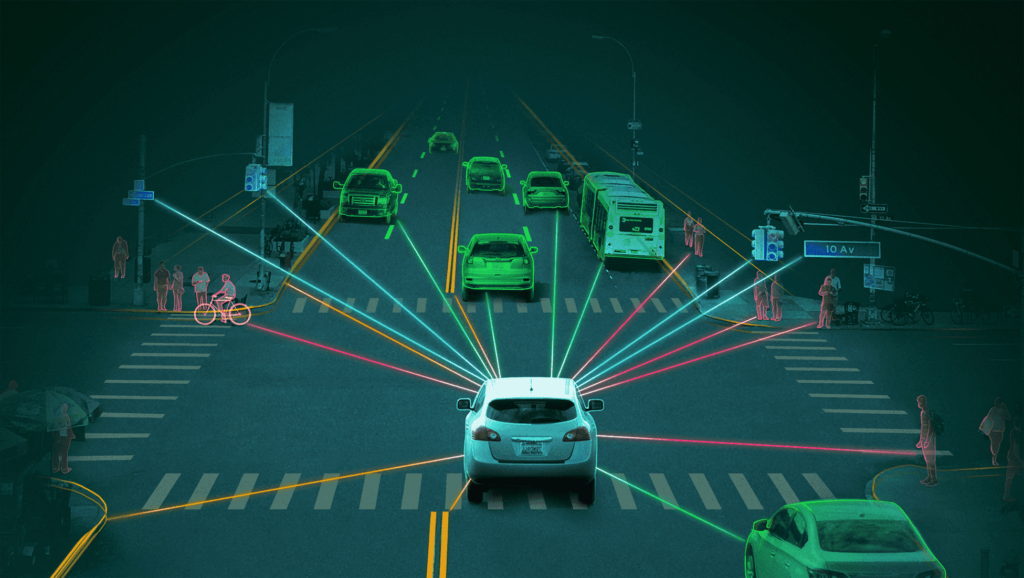
Self Driving Cars Technology
Introduction
Self-driving cars technology, also known as autonomous vehicles, are a revolutionary advancement in transportation.
Using cutting-edge technology like sensors, AI, and intricate algorithms, these vehicles navigate roads without human intervention.
They offer the promise of safer, more efficient travel, potentially reshaping our future in mobility and transportation.
1. How do self-driving cars perceive their surroundings?
Self-driving cars navigate the world around them through a high-tech symphony of sensors and smart technology.
Imagine these cars as intelligent detectives using their ‘senses’ to understand and interact with the environment.
Cameras, much like our own eyes, capture visual data to recognize objects, read road signs, and detect pedestrians.
They work in tandem with advanced software that interprets this visual information, helping the car make informed decisions on the go.
Radar systems act as the ears of the vehicle, bouncing radio waves off objects to gauge distances and speeds.
This allows the car to detect and avoid obstacles, even in challenging weather conditions like heavy rain or fog.
Lidar, akin to a touch sense, uses laser pulses to create 3D maps, measuring the shape and distance of objects around the car with exceptional precision.
All this information is processed by powerful onboard computers—the brains of the self-driving car.
These computers analyze data from the sensors and make split-second decisions to ensure a safe and smooth ride.
The beauty of this setup lies in its redundancy. If one sensor fails, others can step in, ensuring reliability and safety.
As technology advances, these vehicles become even better at perceiving and navigating the world, bringing us closer to a future where self-driving cars are part of our everyday lives.
2. How do self-driving cars make decisions?
Self-driving cars make decisions like thoughtful, cautious drivers—except their decisions are based on lightning-fast computations and an array of smart algorithms.
Think of these cars as brainy navigators constantly processing information to ensure a safe and efficient journey.
These vehicles rely on an amalgamation of sensors gathering real-time data from their surroundings—cameras, radars, lidars, and more.
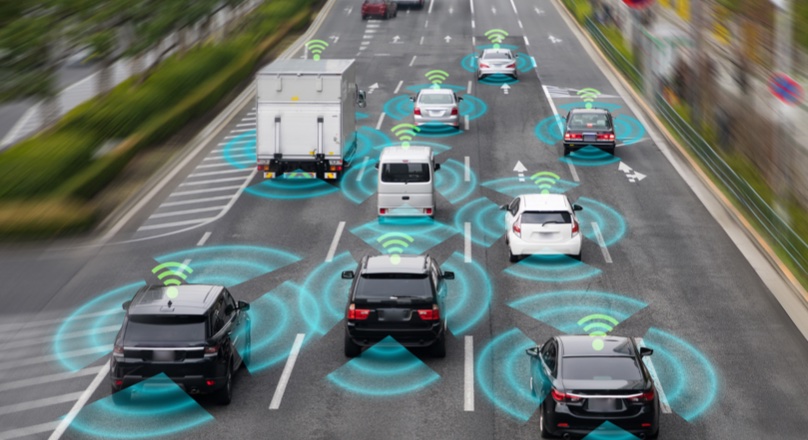
This data is swiftly analyzed by onboard computers, which serve as the car’s brain.
These computers use complex algorithms and artificial intelligence to interpret the information.
They assess everything, from the movement of other vehicles to the behavior of pedestrians, and even unexpected events like a ball rolling onto the road.
By comparing this real-time data to pre-existing maps and a vast array of scenarios stored in their memory, these super-smart cars predict how situations might unfold.
Just like experienced drivers, they make split-second decisions on speed, steering, and braking to navigate the roads safely.
Safety is paramount, so self-driving cars continuously reassess their surroundings, identifying potential risks and adjusting their actions accordingly.
Redundancy in decision-making is also key—if one system encounters a problem, others take over to ensure a reliable and secure journey.
As technology advances, these decision-making processes become even more refined, inching us closer to a future where self-driving cars seamlessly coexist with traditional vehicles,
promising a safer and more efficient driving experience.
3. How do self-driving cars handle unexpected situations?
Self-driving cars are the superheroes of the road, ready to face unexpected situations with their bag of clever tricks.
These vehicles are equipped with a host of sensors and cutting-edge technology that helps them adapt to surprises just like a seasoned driver—but with the added advantage of lightning-fast reactions.
When faced with something unexpected, like a sudden road closure or a pedestrian darting into the street, self-driving cars swiftly collect data from their sensors.
These sensors, including cameras, radars, and lidars, work together to provide a real-time snapshot of the situation.
This information is rapidly processed by the car’s brain—the onboard computers—employing advanced algorithms and AI to assess the best course of action.
These brainy vehicles rely on a vast library of scenarios stored in their memory, allowing them to predict and respond to the unexpected.
Just like skilled drivers, they make split-second decisions, adjusting their speed, changing lanes, or coming to a safe stop, all in an effort to navigate the surprise safely.
Redundancy is the name of the game. If one sensor or system faces a glitch or confusion, other sensors and backup systems kick in to ensure a reliable response.
This backup system guarantees a safety net, enabling the car to handle the unexpected with confidence, ensuring a secure and smooth ride for passengers.
As technology continues to advance, these superhero cars become even more adept at handling surprises, making our roads safer for everyone.
4. How are self-driving cars being tested and evaluated?
Self-driving cars undergo rigorous testing, like students preparing for a big exam, ensuring they’re safe and reliable before hitting the roads.
These tests happen in various environments, from controlled simulations to real-world scenarios, to put these intelligent vehicles through their paces.
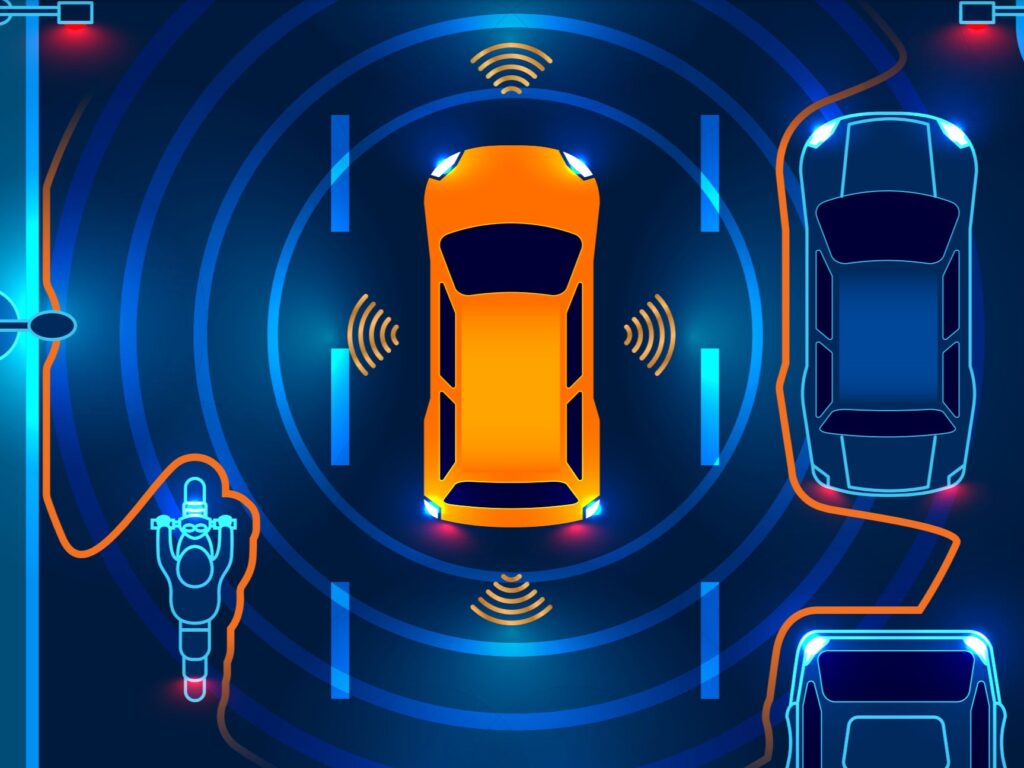
Simulation testing is like a virtual playground for self-driving cars.
Engineers create computer-simulated environments that mimic real-world conditions, allowing these cars to navigate different scenarios in a safe, controlled setting. Computer Vision To Improve
Think of it as a video game for the cars, where they encounter diverse challenges without any real risk.
Real-world testing is where the rubber meets the road.
These vehicles are taken out for on-road trials in urban, suburban, and rural areas.
They face everyday situations, from heavy traffic to complex intersections, learning to adapt to the chaos of real-life driving.
Safety is a priority during these tests. Engineers constantly monitor and gather data on the car’s performance, identifying any glitches or areas for improvement.
They analyze how the car reacts in various situations, making sure it follows traffic rules and responds appropriately to different scenarios.
Additionally, regulatory bodies set standards and guidelines for testing self-driving cars, ensuring they meet safety and operational requirements before being approved for public roads.
This multi-faceted testing and evaluation process aims to make self-driving cars not just smart, but also incredibly safe and reliable for future transportation.
5. How will self-driving cars be standardized and regulated?
Standardizing and regulating self-driving cars is like creating a rulebook to ensure they’re safe and trustworthy road companions.
Just like traffic laws keep us safe, a set of guidelines and standards are being developed to govern the use of these futuristic vehicles.
Regulatory bodies and government agencies are collaborating to establish rules that self-driving car manufacturers must follow.
These regulations cover various aspects, from the design and functionality of the vehicles to how they’ll operate on public roads.
Safety is a top priority. Standards are being set to ensure these cars meet specific safety benchmarks.
They’ll need to prove they can navigate roads safely, interact with other vehicles, and protect passengers and pedestrians.
Additionally, there will likely be rules about data privacy and cybersecurity, ensuring that the sensitive information these cars collect remains secure and private.
Testing and certification processes are also being designed. Similar to how driver’s licenses work,
these cars might require certifications to prove they meet the necessary safety and operational standards before being allowed on the roads.
Regulations will adapt and evolve with advancements in technology.
As self-driving cars become more common, these rules will play a crucial role in ensuring a smooth integration into our transportation systems,
promising a safer and more regulated future for autonomous vehicles.
Societal Implications
1.What impact will self-driving cars have on jobs?
Self-driving cars are set to transform the way we commute,
but their arrival might also bring changes to the job landscape.
While these vehicles offer exciting possibilities, they might impact certain job sectors.
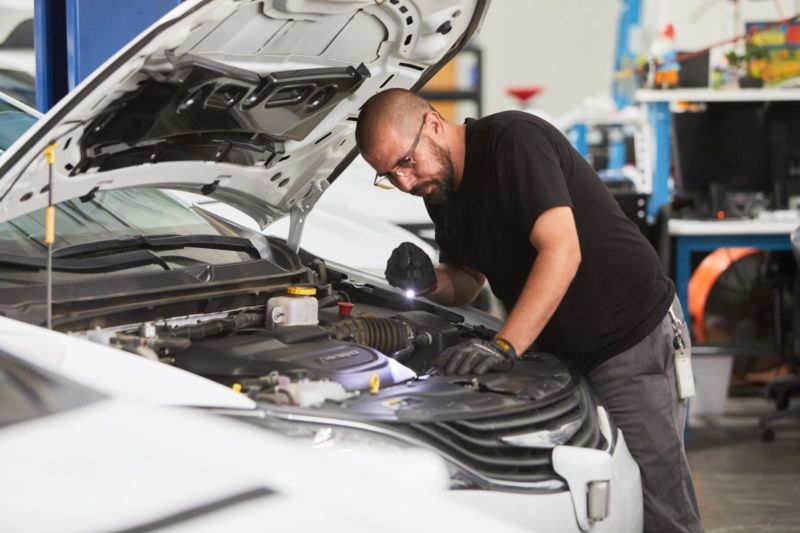
Firstly, the transportation industry, especially jobs related to driving, could see significant shifts.
With self-driving cars, taxi and truck drivers might experience changes in their roles.
However, new opportunities may arise in overseeing and maintaining these vehicles, creating jobs in software development, vehicle monitoring, and maintenance.
Additionally, self-driving technology might reshape the nature of certain roles.
For instance, delivery services might see a transition, possibly requiring fewer drivers but more workers handling loading, maintenance, and managing vehicle fleets.
Moreover, as these vehicles become prevalent, professions tied to parking services might transform, potentially affecting valets and parking attendants.
While some jobs could change, the growth of self-driving cars may also generate new employment opportunities.
Industries related to technology, data analysis, and vehicle infrastructure are likely to expand, creating a demand for specialized skills in these fields.
The impact on jobs is a complex puzzle that will continually evolve.
As with any technological advancement, it will be crucial to adapt and potentially retrain the workforce to align with these changes,
ensuring a smooth transition and creating new opportunities in the evolving job market.
2. How will self-driving cars impact traffic congestion and infrastructure?
Self-driving cars hold the promise of transforming our roads and reshaping traffic patterns and infrastructure in exciting ways.
With their potential to optimize driving efficiency, they might significantly impact traffic congestion and the infrastructure supporting our transportation systems.
These smart vehicles could potentially ease traffic congestion by reducing human errors and improving traffic flow.
By communicating with each other and traffic systems, self-driving cars can navigate more efficiently,
potentially reducing stop-and-go traffic and preventing bottlenecks.
Moreover, with the ability to follow traffic rules precisely and maintain safe distances,
these cars might optimize road capacity, allowing more vehicles to safely travel on the same roads.
This efficiency might lead to a reduction in the need for wider roads or additional lanes in certain areas.
The advent of self-driving cars could also influence city planning and infrastructure development.
As their usage increases, urban planners might rethink parking infrastructure, possibly reducing the need for extensive parking spaces in city centers, making room for more green spaces or developments.
However, these changes won’t happen overnight and will require a collaborative effort between policymakers, city planners, and transportation authorities.
While self-driving cars offer the potential for improved traffic flow and optimized infrastructure,
their integration will need careful planning and adaptation to fully realize these benefits.
3. How will self-driving cars impact privacy and data security?
Self-driving cars, like any smart technology, raise important questions about privacy and data security.
These vehicles collect a wealth of information to navigate and operate safely, sparking discussions on how this data is handled and protected.
Privacy concerns emerge from the vast amount of data these cars gather—information about routes, destinations, and even personal preferences.
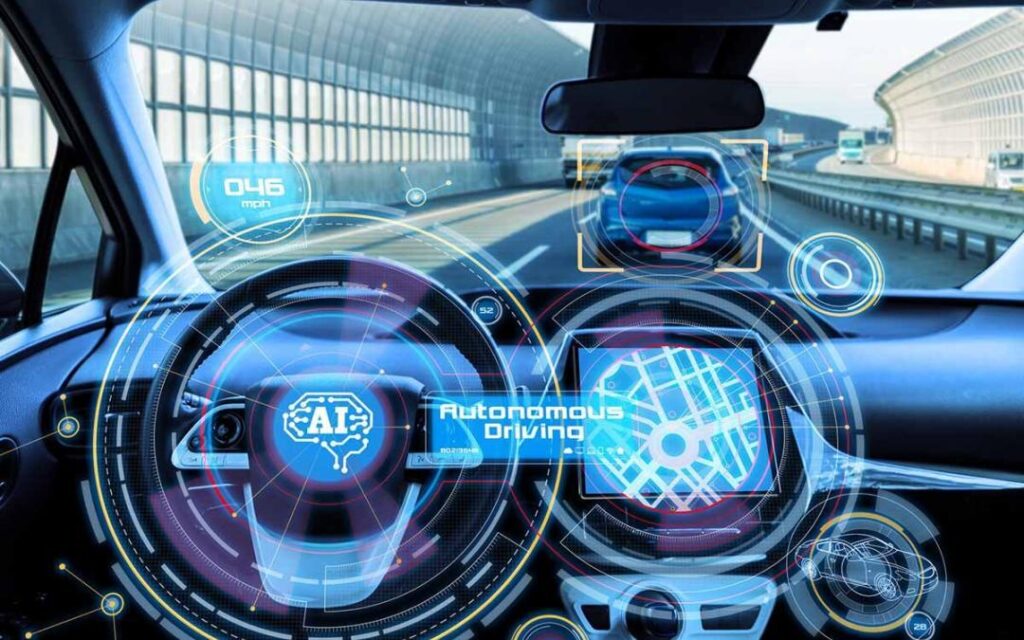
Manufacturers must ensure that this data is anonymized and stored securely, protecting individuals’ identities and personal details.
Data security is crucial too. With connectivity features, self-driving cars could be vulnerable to cyber threats.
Manufacturers need robust systems to prevent hacking or unauthorized access to the car’s controls and sensitive data.
Regulations and standards are being developed to address these concerns.
They aim to outline how data is collected, used, and stored, ensuring transparency and providing users with control over their information.
As this technology evolves, ensuring privacy and data security will be an ongoing challenge.
Manufacturers, regulators, and cybersecurity experts must work together to build trust and create systems that protect user privacy while harnessing the benefits of self-driving cars.
4. How will self-driving cars impact liability and insurance?
Self driving cars technology are poised to revolutionize transportation, but their advent raises crucial questions about liability and insurance.
As these vehicles take the wheel, the landscape of responsibility for accidents and insurance coverage undergoes a seismic shift.
The traditional model of driver liability might see a significant transformation.
With autonomous cars, the focus could pivot from individual drivers to manufacturers, software developers, or even the entities responsible for maintenance and updates.
Determining fault in accidents may rely more on the technology, its algorithms, and the division of responsibility among the different parties involved in creating and maintaining the vehicle.
Insurance companies will likely adapt to this new paradigm.
The risk profiles for autonomous vehicles might differ substantially from traditional cars, impacting insurance premiums.
Insurers may concentrate more on product liability insurance for manufacturers or software companies rather than individual driver coverage.
Policies might evolve to encompass a blend of traditional auto insurance and product liability coverage, reflecting the complex interplay of human and machine involvement in accidents.
While self driving cars technology promises enhanced safety, the transition will undoubtedly prompt regulatory and legal adjustments.
Clarity in liability assignment and comprehensive insurance frameworks will be vital to protect both consumers and industry stakeholders in this evolving automotive landscape.
The way we think about accidents, fault, and coverage is at the cusp of transformation as self-driving cars become a common sight on the roads.
5. How will self-driving cars impact social equity and accessibility?
Self driving cars technology hold the potential to redefine social equity and accessibility in transportation,
promising a seismic shift in mobility for diverse communities.
These innovative vehicles could revolutionize how people move, offering new opportunities and overcoming barriers.
One significant impact lies in enhancing accessibility. Self-driving cars might empower individuals unable to drive due to age, disability, or other limitations,
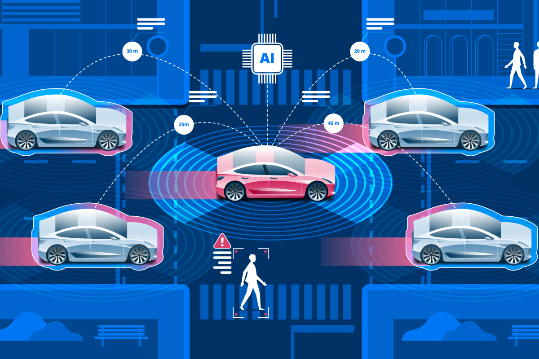
granting them newfound independence. This could level the playing field, providing greater access to jobs, education, and social activities.
Additionally, in underserved or rural areas with limited transportation options, autonomous vehicles could bridge the gap, offering a more reliable and affordable means of travel.
However, challenges persist. Affordability and initial implementation costs may initially limit access to these advancements,
potentially creating a divide between those who can afford autonomous vehicles and those who cannot.
Moreover, ensuring these technologies are designed with inclusivity in mind, considering diverse needs and ensuring they serve all members of society, remains critical.
The advent of self-driving cars presents an incredible opportunity to reshape transportation equity.
Balancing innovation with a focus on universal access will be vital to ensure that these developments benefit everyone, read more related
irrespective of background or ability, as we journey towards a more inclusive and accessible future in transportation.
Conclusion
Self driving cars technology offer a thrilling glimpse into the future of transportation,
promising safer roads and increased accessibility.
Yet, their impact on liability, insurance, social equity, and accessibility underscores the need for careful
consideration and inclusive design as we navigate this transformative technological landscape.
FAQs
Self-driving cars aim to enhance safety through advanced technology. However, continued testing and refinement are ongoing to ensure their reliability. The landscape of insurance might shift from individual driver coverage to more focus on manufacturers, software developers, and product liability The goal is increased accessibility, but initial costs and design considerations need attention to ensure inclusivity for all. Determining liability might shift from individuals to the technology creators or maintenance entities involved in the vehicle’s production and operation. They’re gradually being introduced, but widespread adoption depends on regulatory approvals, technological advancements, and public acceptance.1. Are self-driving cars safe?
2. How will self-driving cars affect insurance?
3. Will self-driving cars be accessible to everyone?
4. Who is liable in self-driving car accidents?
5. When will self-driving cars become mainstream?






1 thought on “Understanding the Evolution of Self Driving Cars Technology: A Comprehensive Guide 2023”